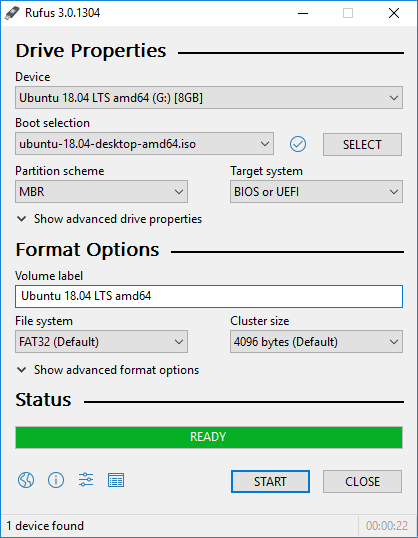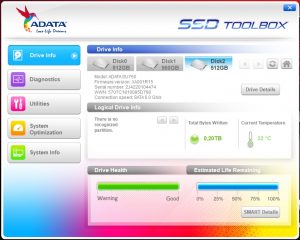

- #BOOT FROM USB ADATA SSD TOOLBOX FULL#
- #BOOT FROM USB ADATA SSD TOOLBOX SOFTWARE#
- #BOOT FROM USB ADATA SSD TOOLBOX PC#
- #BOOT FROM USB ADATA SSD TOOLBOX FREE#
#BOOT FROM USB ADATA SSD TOOLBOX PC#
The PNY XLR8 CS3140 M.2 SSD is one of the best SSDs around, both for gamers and PC enthusiasts alike.
#BOOT FROM USB ADATA SSD TOOLBOX FULL#
Read the full Samsung 990 Pro review The best budget gaming M.2 SSD

Until PCIe 5.0 SSDs really hit the scene, it remains a top-tier choice for enthusiasts and professionals alike. In essence, the 990 Pro caters to a niche demanding peak performance. Those strictly budget-focused might consider the more affordable Samsung 980 or 970 Evo. Additionally, while its price matches high-performance PS5 SSDs, it sits higher than budget-friendly SSDs like the Adata XPG SX8200. Its current limited capacity options might deter some, though we anticipate more choices soon. However, the 990 Pro comes with its caveats. This includes PS5 performance as well, where we were able to copy a 123GB game roughly 84% faster using the Samsung 990 Pro compared to the console's storage drive. Such prowess translates to quicker game loads and swift app startups. Tests revealed the 990 Pro surpassing the 980 Pro, transferring a 10GB file about 9% quicker and copying a large folder roughly 32% faster. Additionally, it showcases impressive read speeds, nearing PCIe 4.0's maximum of 8,000MB/s. For gamers, it boasts unparalleled read speeds for creative professionals, its write speeds shine, especially during intensive tasks.Ī standout feature: the 990 Pro's sequential writes significantly outpace both its predecessor and competitors. However, its performance, nearly maxing out the PCIe 4.0’s potential, silenced many naysayers. No one needs to accept or take it.Samsung's 990 Pro M.2 SSD garnered attention upon its announcement, primarily due to its adherence to the existing PCIe 4.0 standard instead of the anticipated PCIe 5.0. I just think that anyone who uses FreeNAS/TrueNAS and is using a mirrored boot pool should understand what they are getting and not getting. So the reason you will see me recommend no mirrored boot pool is for the above reasons: 1) It doesn't mean the system will bootstrap if the primary boot device fails, 2) It easy to maintain a copy of the config file and just rebuild the boot device. If you are a local user then rebuilding the boot drive is super easy and fairly quick if you have a copy of your config file, or you could use a mirror and then reconfigure it once you figure out which drive failed. Use case matters here and I feel that if you do have a mirrored boot pool AND are remotely managing the device, you could save the day remotely via IPMI and reconfigure the boot device and get the system back online. Many people think that because FreeNAS/TrueNAS in configured as a mirror boot pool that it is fully automatic, It isn't.
#BOOT FROM USB ADATA SSD TOOLBOX SOFTWARE#
The only true way to implement a mirrored boot pool that would bootstrap even with a fault is to use a RAID card that would control this action, software RAID can't do this. One of the big things with using a mirrored boot pool is that in most configurations I have seen here, if the primary boot drive fails then the user has a dead system until they reconfigure the motherboard to boot from the alternate/good device and sometimes that also means physically removing the failed device. I just want to get it right.Ĭlick to expand.I couldn't agree more, the use case matters. I just need some suggestions before I make my final build. I could mirror either the NVMe or the SSD, but as rebuilding a FreeNas server seems quite trivial, I don't see the need.
#BOOT FROM USB ADATA SSD TOOLBOX FREE#
I've used a WD Blue SSD as my boot drive on my Windows box for about 3 years with absolutely no problems and I suspect the NVMe would have the same error free longevity. But that menu item is now missing in the 11.3-U1 GUI.īoth the NVMe and SSD cost about 5 times more than the USBs. Under 11.2-U8, replacing the USB stick on the fly was pretty simple. The cost for the USB sticks is minimal, but I have had two USB failures in the two months I've been testing FreeNAS. So the question I'm posing is it better to use a single NVMe or SSD as a FreeNAS boot drive, or to continue using 2 USB sticks in a mirror? So at the same time I also purchased a 256GB NVMe stick, a 250GB WD Blue SSD and four Transcend USB sticks. This motherboard has support for 2 NVMe devices. Motherboard is ASUS P11C-M/4L, with Xeon E-2236 cpu, 32GB ECC memory and 4 x 4TB Seagate IronWolf drives. Probably not up to the spec most gurus here request, but it was what was both available and in my price range. I have finally received the hardware for my new FreeNAS server.


 0 kommentar(er)
0 kommentar(er)
